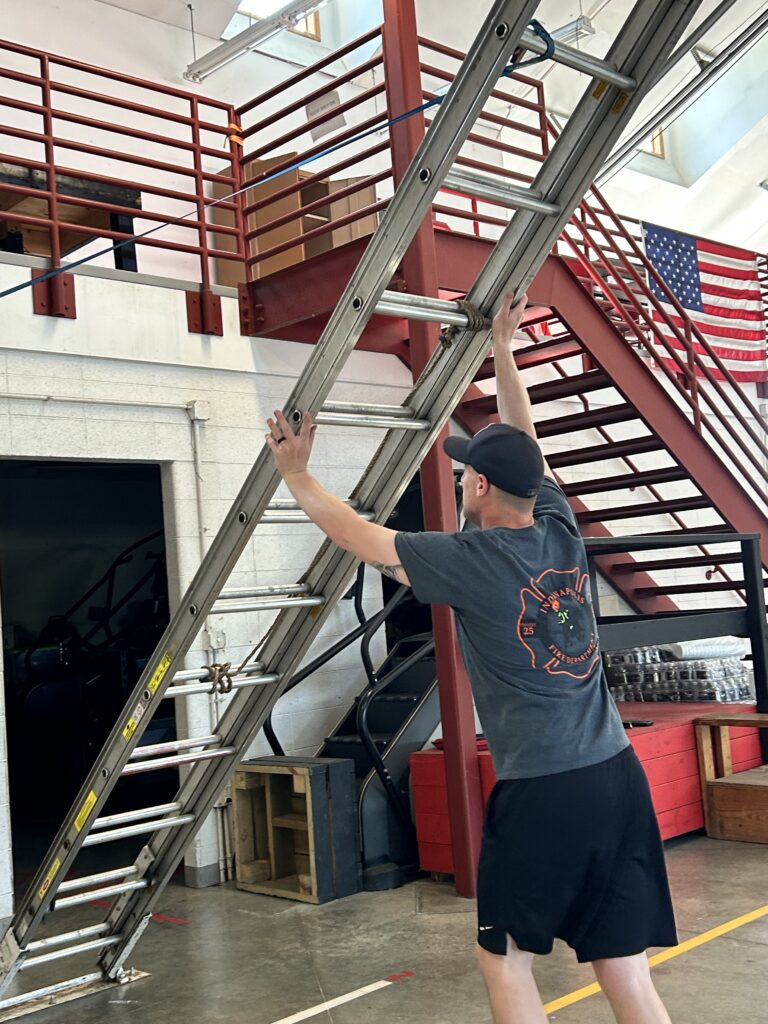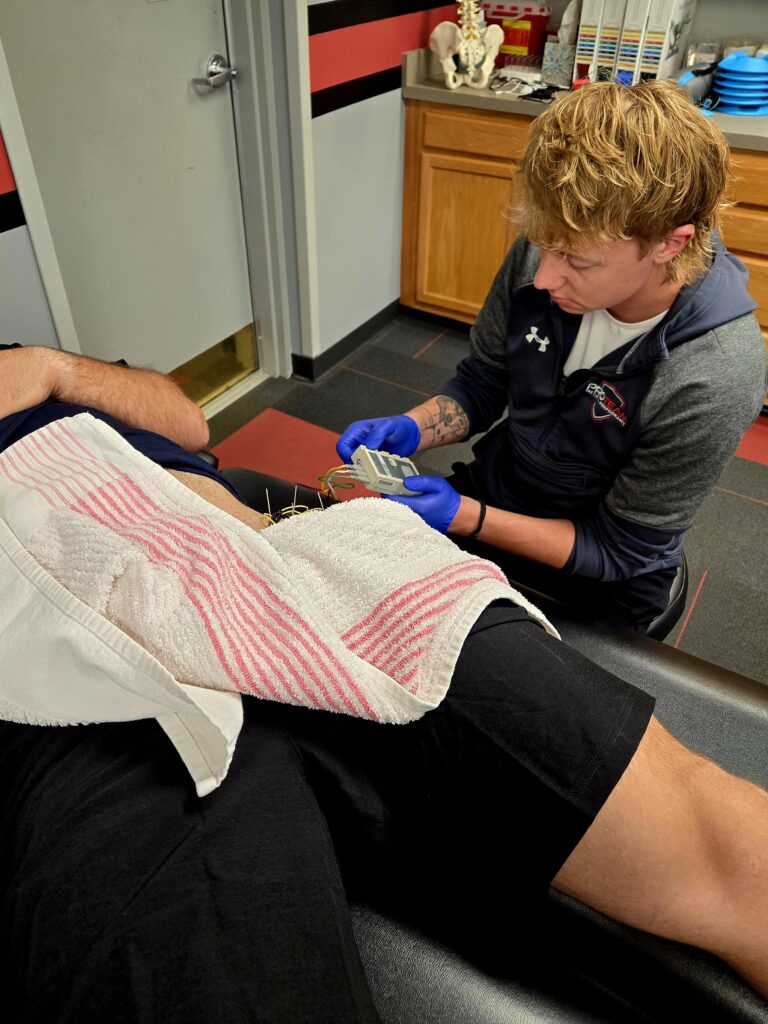Billy Ellison suffered his first job-related injury – a torn anterior cruciate ligament – when he was still a recruit.
Ellison, who has a degree in exercise science, relied on his schooling to rehabilitate and start a new career as a fire fighter. Unfortunately, it wasn’t that simple the next time the Charlotte, NC Local 660 member was injured.
A 2004 training exercise resulted in a torn meniscus and surgery. Over time, his occupational injuries led to osteoarthritis and some limited range of motion. Through rehabilitation, though, he found ways to finish out his 28-year career in the fire service.
“Without proper rehabilitation, I would have retired early, unable to finish out my firefighting career,” said Ellison, who uses his life experiences to help others as an IAFF Fit to Thrive (F2T) instructor. F2T supports the IAFF’s Wellness-Fitness Initiative (WFI) by offering training to fire departments. “I made sure I followed the recommendations of my doctors and physical therapists to recover from each injury. And I kept working to strengthen any weak areas even after being cleared to return to work.”
Firefighting is a dangerous job, and the risk of injury is high. Lower back, shoulder, and knee injuries are common.
Some might be tempted to push through minor aches and pains, but a minor injury can develop into a more serious one. That, in turn, can lead to prolonged recovery, surgical intervention, or even permanent disability.
For example, small tears in the meniscus (knee cartilage) or rotator cuff (a group of muscles and tendons in the shoulder) can grow into bigger tears, requiring more aggressive surgery and longer recovery. Permanent movement limitations and even disabilities are also possible.
Ellison and other experts recommend the following when dealing with injuries.

La Verne, CA Local 3624 President Andrew Glaze runs 100 miles a week, every week, to combat PTSD – and he’s inviting you to join him.
1. Get evaluated
The first step to healing an injury while on the job is evaluation. Fire fighters should follow department protocol here, but keep your Health and Wellness Director in the loop.
South Metro (Colorado) Fire Rescue’s Health and Wellness Director Chris Macklin said his department gets fire fighters safely back on the job faster when the full scope of the injury is known from the beginning.
“Our workers’ compensation prefers that physical therapy is tried before an MRI. But because of a positive working relationship with our local government and the risk manager, we can send our fire fighters for an MRI right away,” said Macklin, a retired member of Local 2086. “This way, there are no delays in administering the right treatment.”
2. Protect yourself on the job
Some injuries are minor enough that members can return to work immediately, with slight modifications or additional recovery between calls.
Calgary, AB Local 255 member Ian Crosby served as the department’s wellness coordinator before being promoted to captain and, later, district chief. He’s currently an F2T instructor.
“A fire fighter still recovering from an injury has few options on the fire ground,” Crosby said. “If staffing allows, fire fighters may be able to rotate out of certain tasks that might irritate the injury. Protective sleeves might also help, depending on the injury. But what will make a difference is how well the fire fighter recovers between calls and shifts.”
Sleep plays a big role. It’s then that muscles will increase blood flow, transporting oxygen and nutrients that help repair muscles and regenerate cells. In addition, the pituitary gland releases growth hormones that stimulate muscle repair and growth. Fire fighters often miss out on good sleep during shifts, so it is important they sleep well off-shift.
Some have also found red light therapy and cold immersion therapy helpful. Red light therapy is a low-level laser therapy that delivers red and near-infrared light to your body. Some studies have shown this helps regenerate cells, restore cell function, and trigger blood flow. Thus, it is supposed to help with muscle regeneration and pain.
Cold immersion therapy is just as it sounds: getting in cold water for anywhere from a few seconds up to five minutes. Research has found evidence it helps reduce the degree of exercise-induced muscle damage that can occur after physically challenging activities. Less damage leads to less inflammation, reducing soreness and restoring physical performance the next day.
3. Physical therapy is necessary
The IAFF WFI offers guidelines to keep fire fighters and emergency medical workers physically and mentally healthy on the job. Among other things, it recommends departments have in-house rehabilitation clinicians, allowing for members to be treated by providers familiar with common fireground injuries.
The Indianapolis Fire Department’s (IFD) wellness program models its injury management and rehabilitation plan after protocols used for professional athletes. The IFD partners with ProTeam Tactical Performance, cofounded by former Indianapolis Colts quarterback Jim Sorgi and former St. Louis Cardinal Joey Vandever. That program encourages early intervention and includes an aggressive physical therapy regimen.
“Our previous program included six weeks of mandatory physical therapy. No one wanted to report their injuries and be put in the system,” said Douglas Evans, Division Chief of Health and Safety at the Indianapolis Fire Department. “Under the current program, the average number of days off per injury has reduced from 14 to 3. And the number of surgeries needed per year has decreased from 130 to 30.”
4. Exercise caution
Once cleared for full duty, it is still important to be careful. Many opt to continue physical therapy as a safeguard.
“If you’ve been injured and cleared for full duty or returning to full duty after a recovery period, it is important for fire fighters to take steps to ensure continued recovery,” said Chris Moran, an Indianapolis Local 416 member who helps coordinate the wellness program. “It’s a good idea to work with the physical therapist or clinician to develop a set of strengthening and mobility exercises in the weaker areas that may be prone to reinjury. “
Dr. David Frost, who oversees the IAFF’s Fit to Thrive program, agreed. He says it’s important to use training and physical therapy to prevent reinjury or getting injured in the first place.
“When fire fighters train, they need to pay particular attention to how they move their knees, lower back, and shoulders. No matter what the exercise is, be conscious of alignment,” Frost said. “This creates a muscle memory. When they are on the fire ground rescuing trapped victims, getting out of fire trucks, and navigating confined spaces, they will be more likely to automatically use proper alignment and have a lesser chance of irritating old injuries or getting a new one.”







